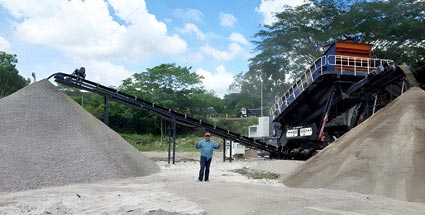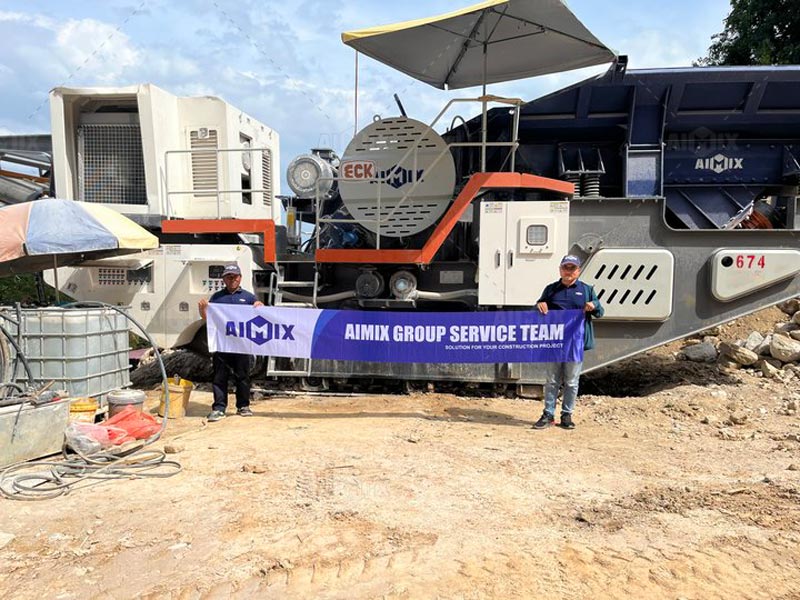Gravel Crusher Settings for Ideal Road Base: Size, Shape & Compaction Matters
Building a road that stands the test of time isn’t just about dumping rocks and rolling over them. It’s a fine-tuned dance of physics, material science, and a little mechanical magic. At the heart of this performance? Gravel. Not just any gravel, though—we’re talking about the perfectly crushed, expertly shaped, and meticulously compacted road base. The secret weapon? Dialing in the right gravel crusher settings.
With the right mix of size, shape, and compaction, your road base becomes a foundation that resists erosion, handles heavy loads, and keeps maintenance costs from ballooning. Let’s dig deep into how to make your crushed material not just good—but road-ready rockstar material.
Why Size Selection Isn’t Just a Guessing Game
Crushing for Gradation Control
One of the first steps in creating the perfect road base is hitting that sweet spot in particle size distribution. It’s not about pulverizing rocks to dust or leaving them as mini-boulders. It's about the Goldilocks zone—just right.
An ideal road base uses a **well-graded mix**: large particles for load-bearing strength and smaller fines that fill the gaps and lock everything into place. Adjusting the crusher's closed-side setting (CSS) can drastically affect the output size. A tighter setting yields smaller particles, which are essential for achieving optimal compaction.
Whether you’re running a jaw, cone, or impact crusher, tweaking these settings based on material type—granite, limestone, or river rock—ensures your base doesn’t fall apart like a house of cards under the first storm.

Target Ranges That Make the Road Last
For most road base applications, a gradation from 0–40mm (0–1.5 inches) is ideal. The larger chunks give the base its brawn. The smaller particles, often called fines or screenings, add the brains—filling voids and enhancing stability.
Too coarse? You’ll end up with a surface that’s weak under pressure and riddled with air pockets. Too fine? Water won’t drain, and the base turns into a sticky mess. The trick is getting a good blend—like mixing cement with just the right amount of sand.
Crushed Shape: The Secret to Locking In Strength
Angular vs Rounded Aggregates
Rounded stones might be charming in a riverbed, but on the road? They're slippery characters. What you want are angular, freshly fractured edges. These lock together, forming a strong, interlocked skeleton that resists shifting under traffic.
Crusher types matter here. Jaw crushers deliver sharp breaks but can create flakier particles. Cone crushers tend to give more cubical shapes, perfect for structural integrity. And if your material is too flaky or elongated, it’s a sign you need to adjust rotor speed or crushing chamber angles.
Flakiness Index and Why It Matters
Yes, the flakiness index sounds like a dating app metric, but in road building, it’s serious business. The lower the flakiness index, the better. Materials with low flakiness compact better, distribute loads evenly, and stay locked in longer.

Aim for less than 25% flakiness for base layers. Achieving that might mean adjusting feed rate, using a pre-screen, or even switching out your aggregate crusher's wear parts to maintain shape consistency.
Compaction: Where It All Comes Together
Moisture Content and Mechanical Compaction
Even the best-shaped, perfectly sized gravel won’t perform if you botch the compaction. It’s not about brute force alone—it’s science. Moisture is the unsung hero here. A slight dampness helps fines stick and migrate, creating a dense matrix when compacted.
Too dry, and the particles won’t bind. Too wet, and the base turns mushy. The optimum moisture content typically sits between 6%–12%, depending on your gradation. Pair it with a vibrating roller or plate compactor, and your base layer will be solid enough to park a freight train on.
Layer Thickness and Rolling Technique
Never try to compact a mountain in one go. Road base should be laid in layers—usually 100–150mm (4–6 inches) thick—and compacted thoroughly before the next is added. Thicker lifts won’t compact evenly and may lead to structural failure.
Use a multi-pass technique: roll forward, then back, then diagonally. It's like ironing a shirt—one pass won’t get all the wrinkles out. Each pass helps particles settle deeper and tighter, creating a unified mass of strength.
Conclusion
A road base built on poorly crushed gravel is like building a house on marshland. Size matters. Shape seals the deal. And compaction is the clincher. Fine-tune those crusher settings, get your gradation and flakiness under control, and treat compaction like the craft it is. The result? A road base that goes the distance, no matter how heavy the haul or wild the weather.

